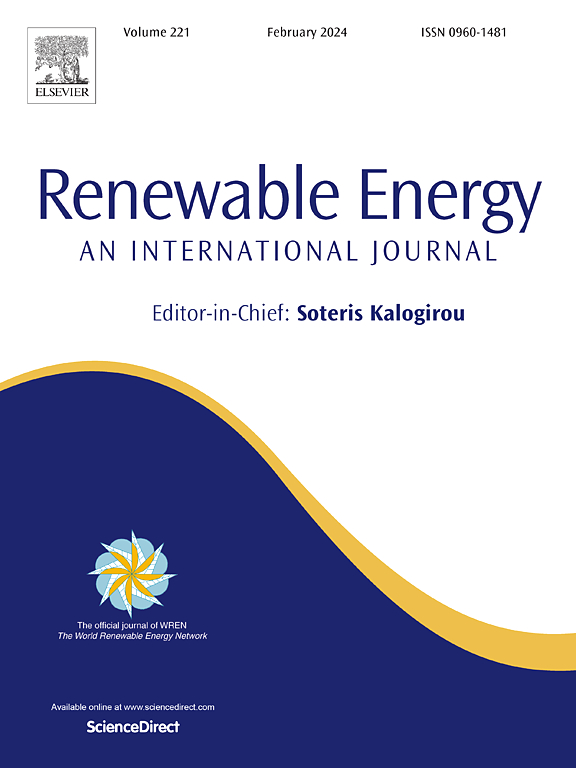Optimization of defect regulation parameters in CsPbI3 perovskite solar cells via machine learning-assisted response surface methodology
IF 9
1区 工程技术
Q1 ENERGY & FUELS
引用次数: 0
Abstract
All-inorganic CsPbI3 perovskite solar cells (PSCs) have shown significant progress in power conversion efficiency (PCE). However, defects at grain boundaries and interfaces still limit their performance and stability. Traditional optimization methods, which focus on individual parameters, are time- and energy-consuming and often fail to achieve optimal multi-parameter performance. To address this challenge, we develop machine learning assisted response surface methodology (ML-assisted RSM) to optimize defect regulation parameters. The reliability and accuracy of the RSM-driven optimization can be validated by ML. Furan-2,5-dicarboxylic acid (FDCA) was found to be an effective interfacial defect regulation material on the CsPbI3 perovskite surface. Using FDCA as the model material to regulate defect, ML-assisted RSM identified optimal conditions (14.26 mM, 103 °C, 9 min), achieving a high PCE of 18.71 %, which aligned closely with the predicted value of 18.68 %. FDCA treatment, which contributed to the “defect healing” effect, improved perovskite quality and reduced non-radiative recombination by interacting -COOH bidentate functional groups with uncoordinated Pb2+ defects. This study demonstrates the value of ML-assisted RSM for fast and accurate multi-parameter optimization in PSCs, accelerating the development of high-performance and stable PSCs, and providing a robust framework for optimizing other photovoltaic devices.

基于机器学习辅助响应面方法的CsPbI3钙钛矿太阳能电池缺陷调节参数优化
全无机CsPbI3钙钛矿太阳能电池(PSCs)在功率转换效率(PCE)方面取得了重大进展。然而,晶界和界面上的缺陷仍然限制了它们的性能和稳定性。传统的优化方法主要集中在单个参数上,费时费力,往往不能达到多参数的最优性能。为了应对这一挑战,我们开发了机器学习辅助响应面方法(ML-assisted RSM)来优化缺陷调节参数。结果表明,呋喃-2,5-二羧酸(furan -2,5-dicarboxylic acid, FDCA)是CsPbI3钙钛矿表面有效的界面缺陷调节材料。使用FDCA作为模型材料来调节缺陷,ml辅助RSM确定了最佳条件(14.26 mM, 103°C, 9 min),获得了18.71%的高PCE,与预测值18.68%非常接近。FDCA处理有助于“缺陷愈合”效果,通过-COOH双齿官能团与不配合的Pb2+缺陷相互作用,提高钙钛矿质量,减少非辐射重组。该研究证明了ml辅助RSM在PSCs中快速准确的多参数优化的价值,加速了高性能和稳定的PSCs的开发,并为优化其他光伏器件提供了强大的框架。
本文章由计算机程序翻译,如有差异,请以英文原文为准。
求助全文
约1分钟内获得全文
求助全文
来源期刊

Renewable Energy
工程技术-能源与燃料
CiteScore
18.40
自引率
9.20%
发文量
1955
审稿时长
6.6 months
期刊介绍:
Renewable Energy journal is dedicated to advancing knowledge and disseminating insights on various topics and technologies within renewable energy systems and components. Our mission is to support researchers, engineers, economists, manufacturers, NGOs, associations, and societies in staying updated on new developments in their respective fields and applying alternative energy solutions to current practices.
As an international, multidisciplinary journal in renewable energy engineering and research, we strive to be a premier peer-reviewed platform and a trusted source of original research and reviews in the field of renewable energy. Join us in our endeavor to drive innovation and progress in sustainable energy solutions.
 求助内容:
求助内容: 应助结果提醒方式:
应助结果提醒方式:


